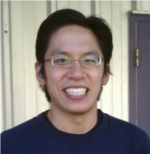Adrian Liu, BCCP Postdoctoral Fellow

Although I am broadly interested in astrophysics and cosmology, my recent work has focused on using the 21cm hyperfine transition of neutral hydrogen atoms to map our Universe. This technique, known as 21cm tomography, will eventually survey the distribution of matter in a larger faction of our observable Universe than current cosmological probes such as galaxy surveys and the cosmic microwave background. In addition to providing better constraints on cosmological parameters, this will allow precision tests of inflation and competitive bounds on the neutrino mass. Crucially, 21cm tomography will also be the only direct observational probe the Epoch of Reionization (EoR), during which the first stars and galaxies formed. Understanding how these first structures formed will help to complete the story of our Universe's transformation from a set of primordial fluctuations to the rich collection of astronomical structures that we see today. Unfortunately, 21cm tomography is technically challenging and has yet to mature into a practical probe of cosmology. My recent research has thus focused on bridging the gap between the theoretical promise and observational reality of 21cm tomography. This has led to algorithm development for radio telescope calibration, studies of Galactic and xtragalactic foreground contamination, and methods for foreground subtraction. Experimental design and a critical examination of observationally measurable statistics have also been recent considerations. I am also part of a number of observational groups, including the MWA, GMRT-EoR, and PAPER, and am involved in data analysis efforts. Early attempts at detecting a genuine cosmological signal from the data have been encouraging, if challenging, and suggest that 21cm tomography will soon be able to live up to its great potential.
